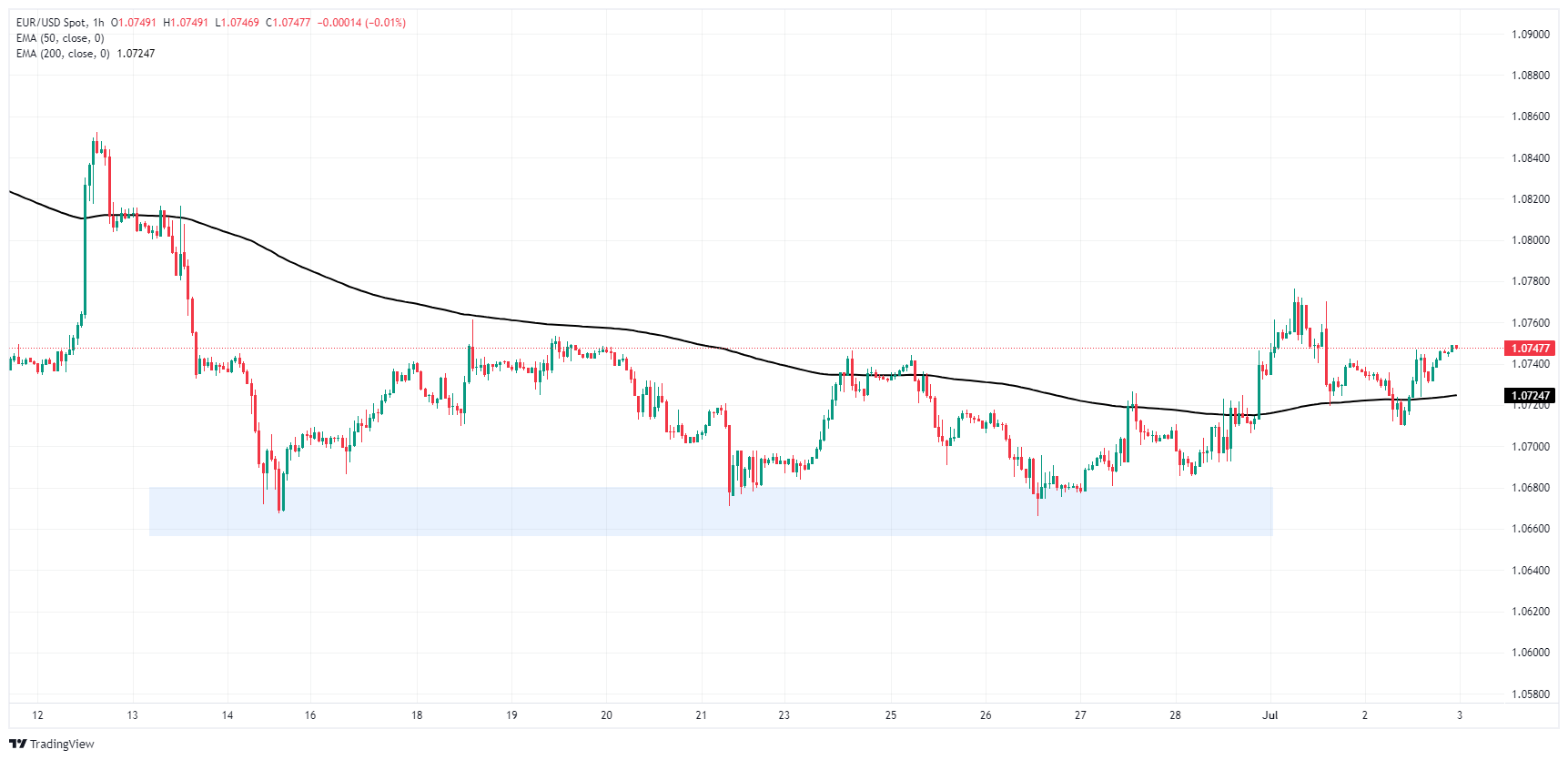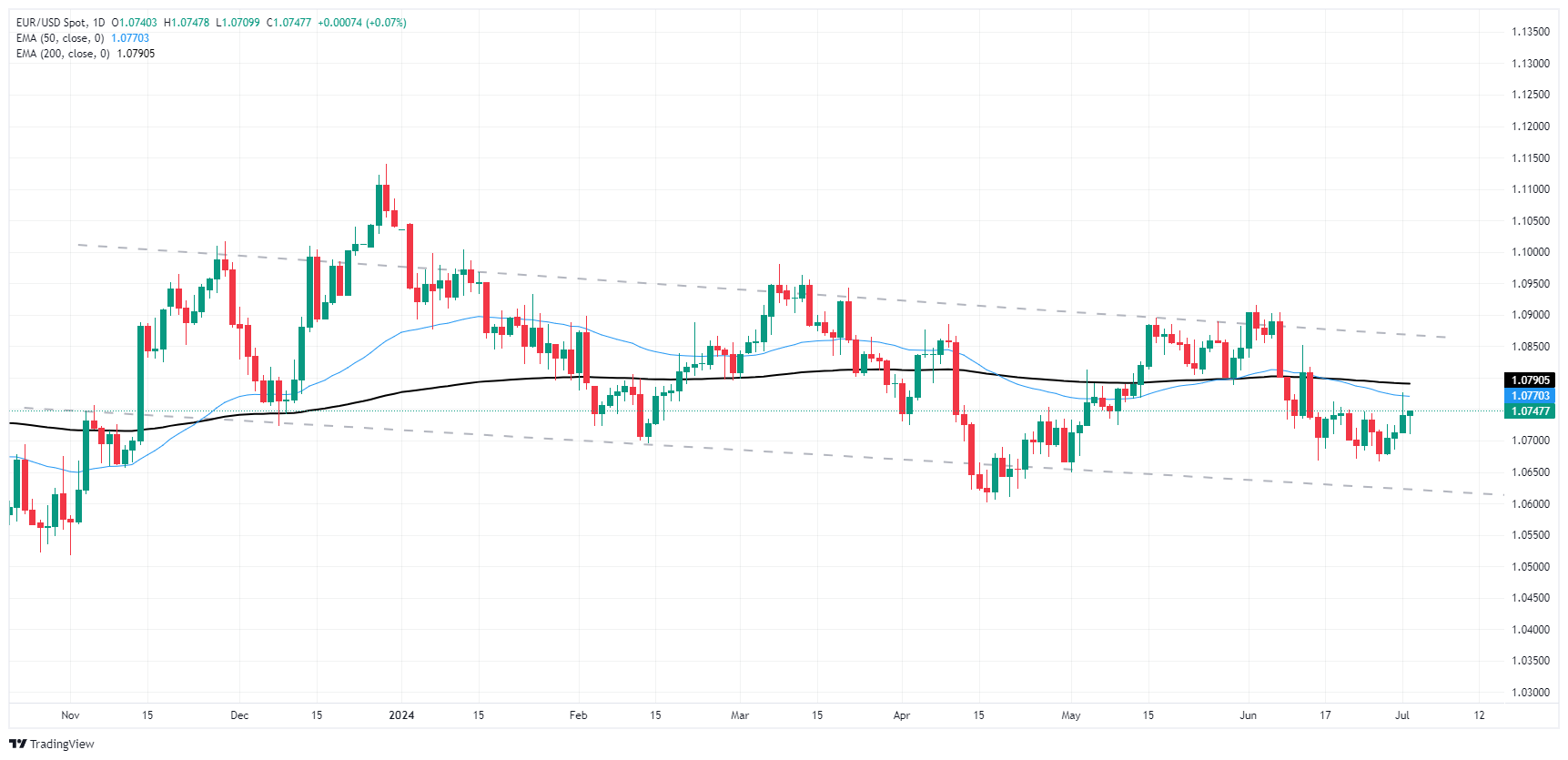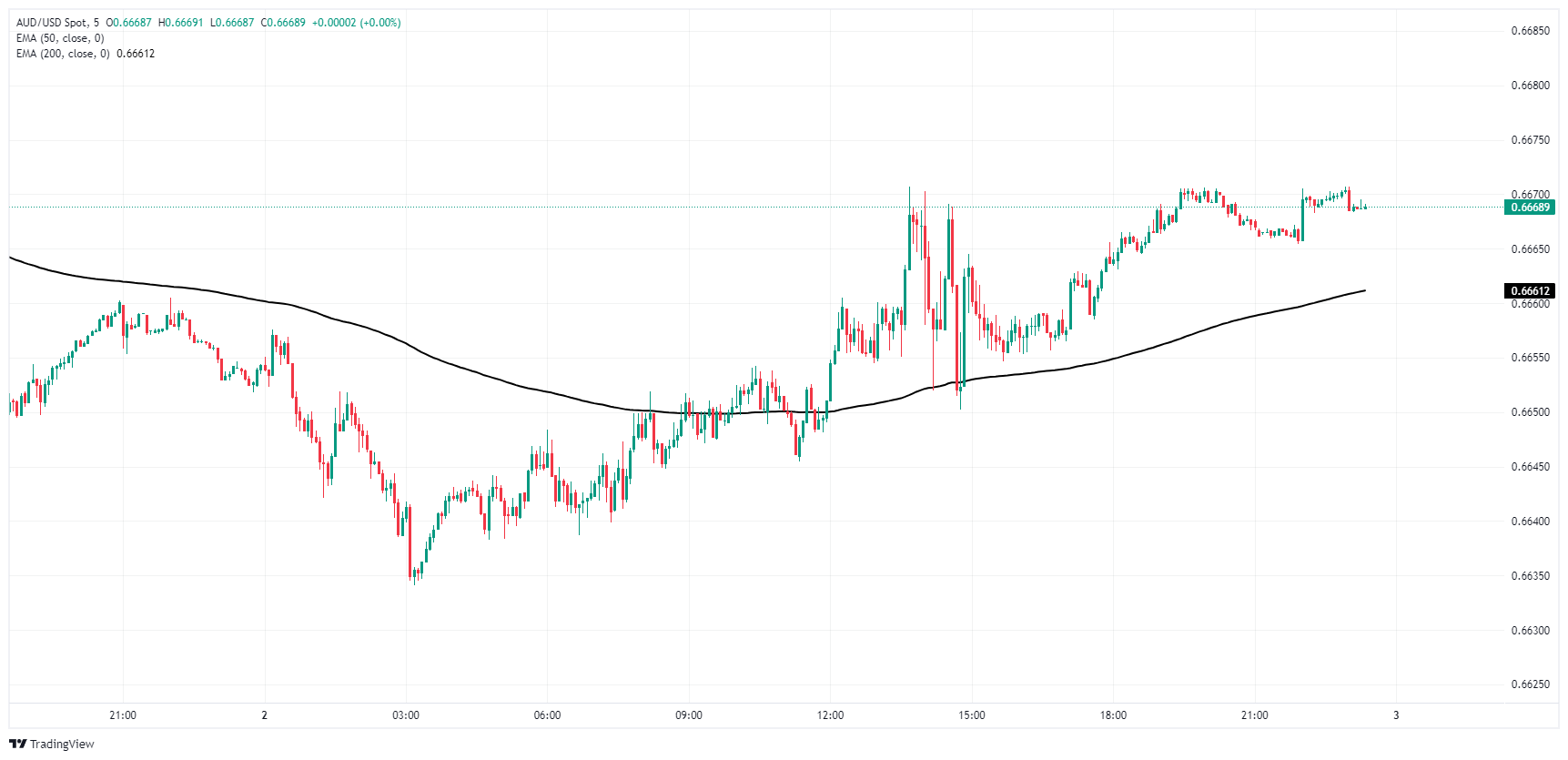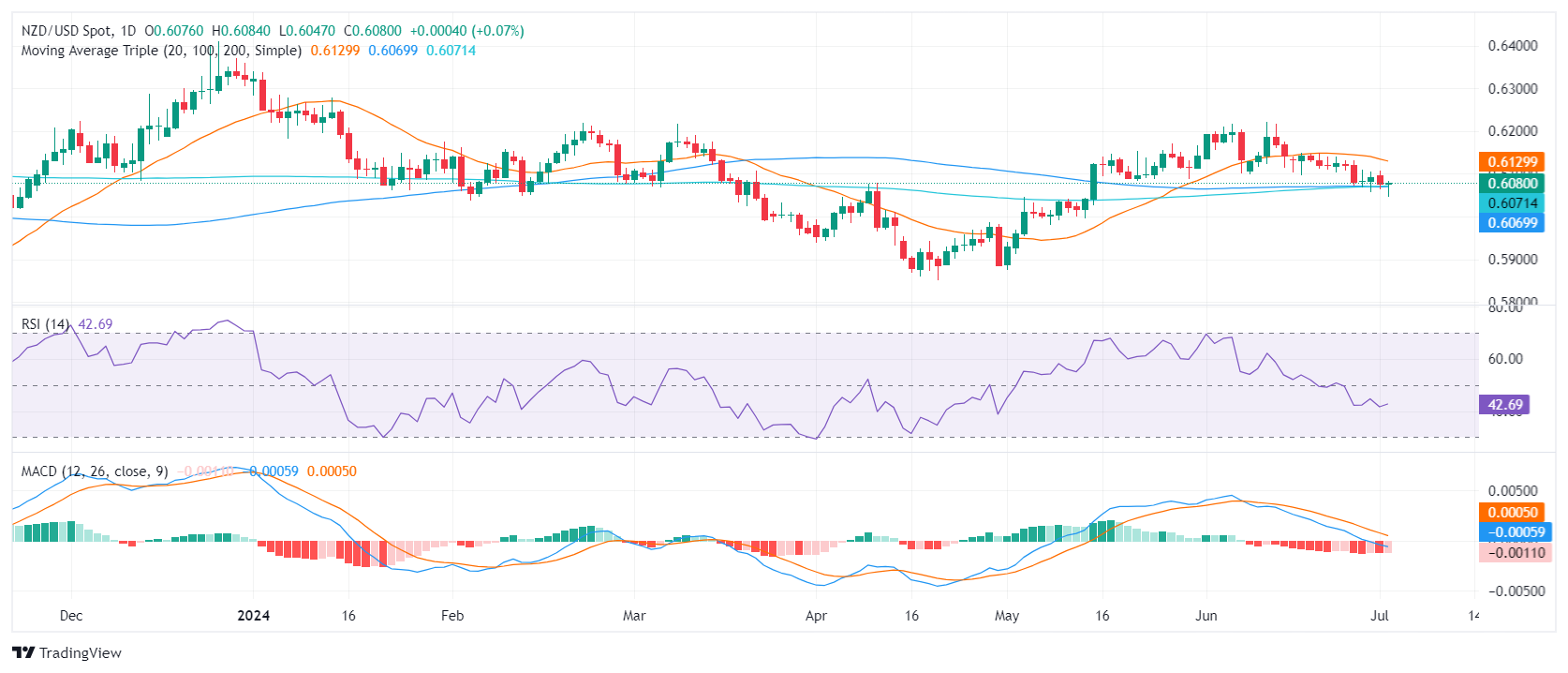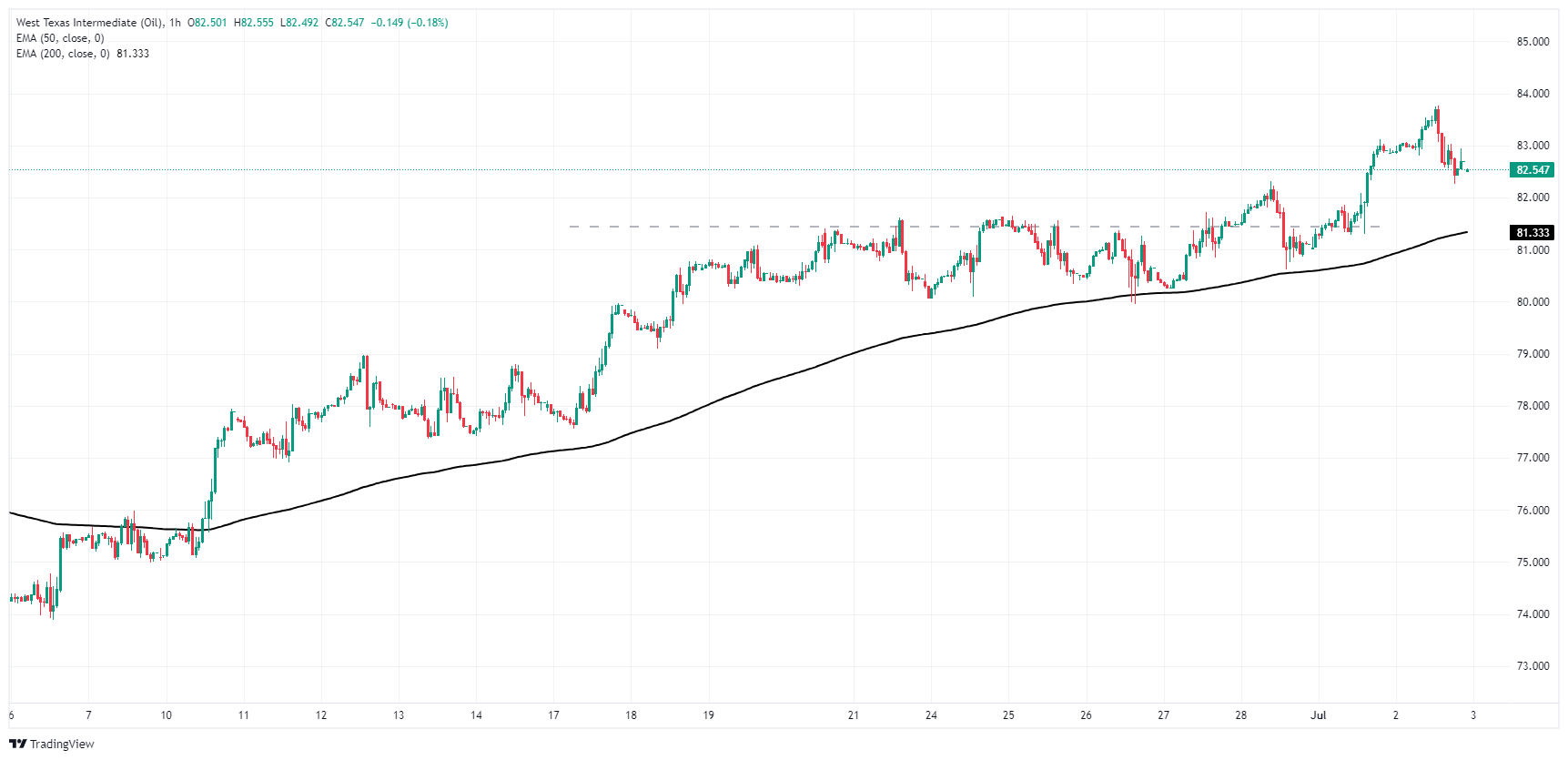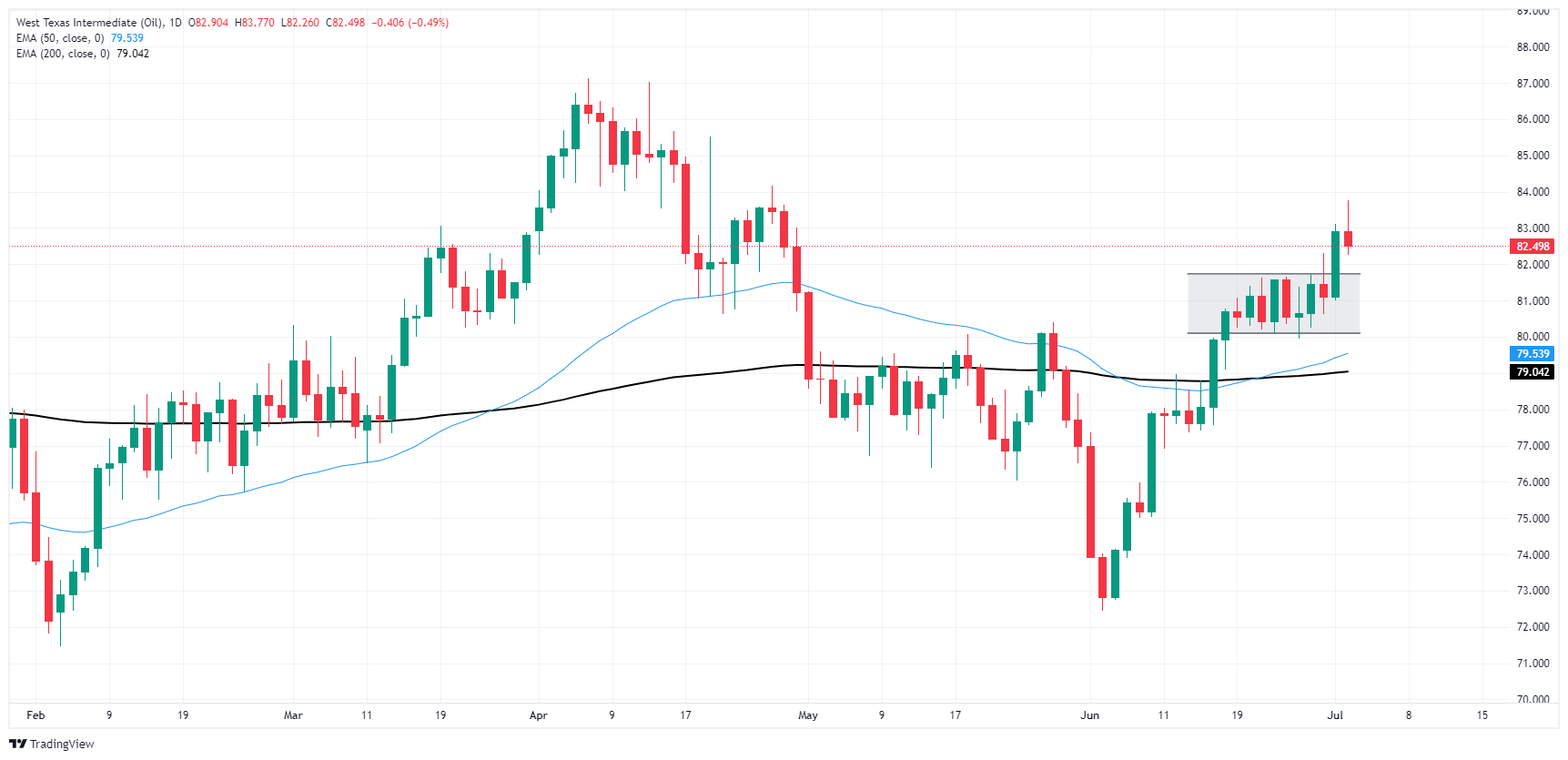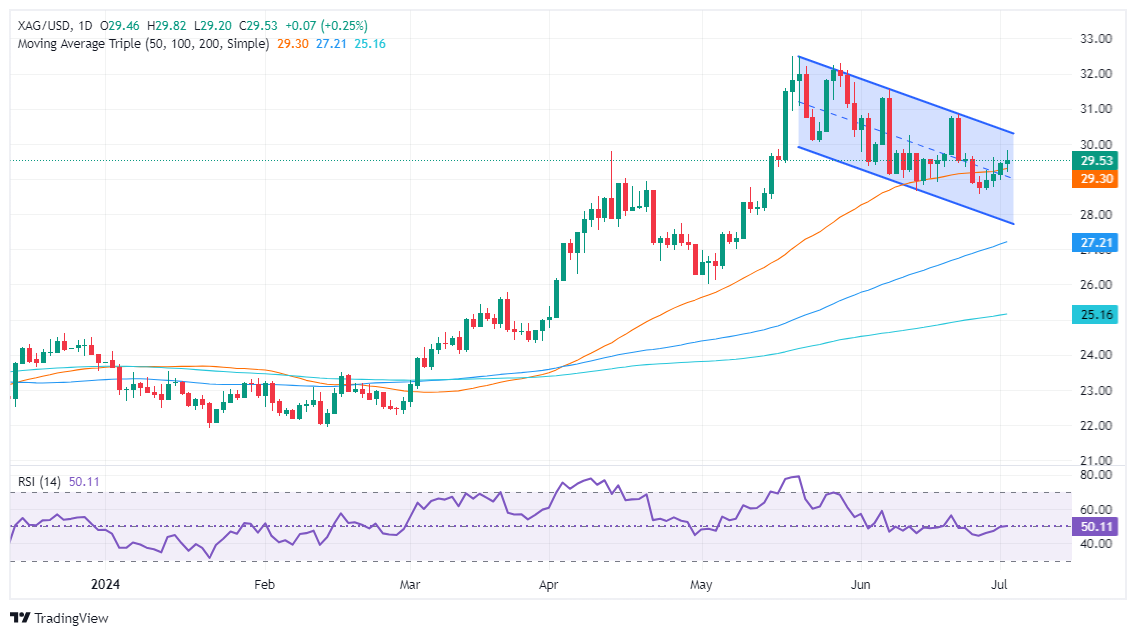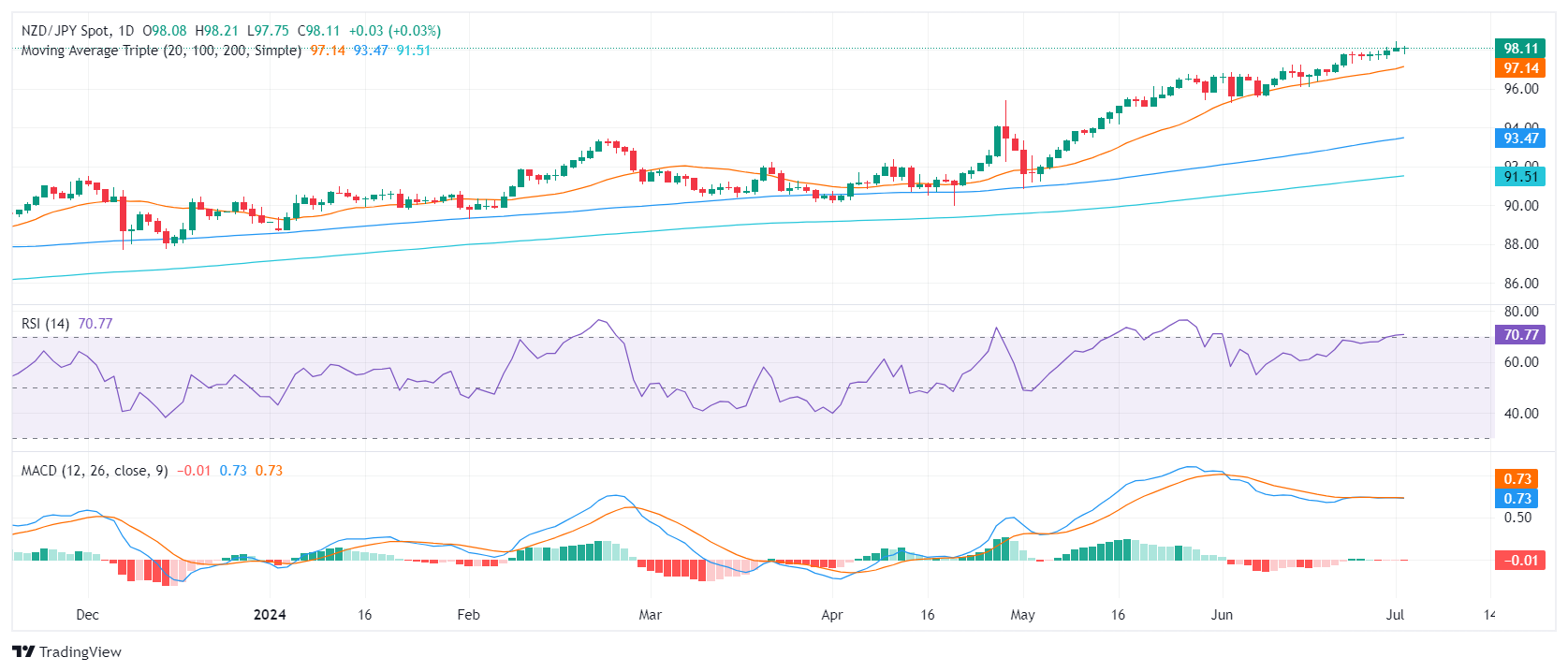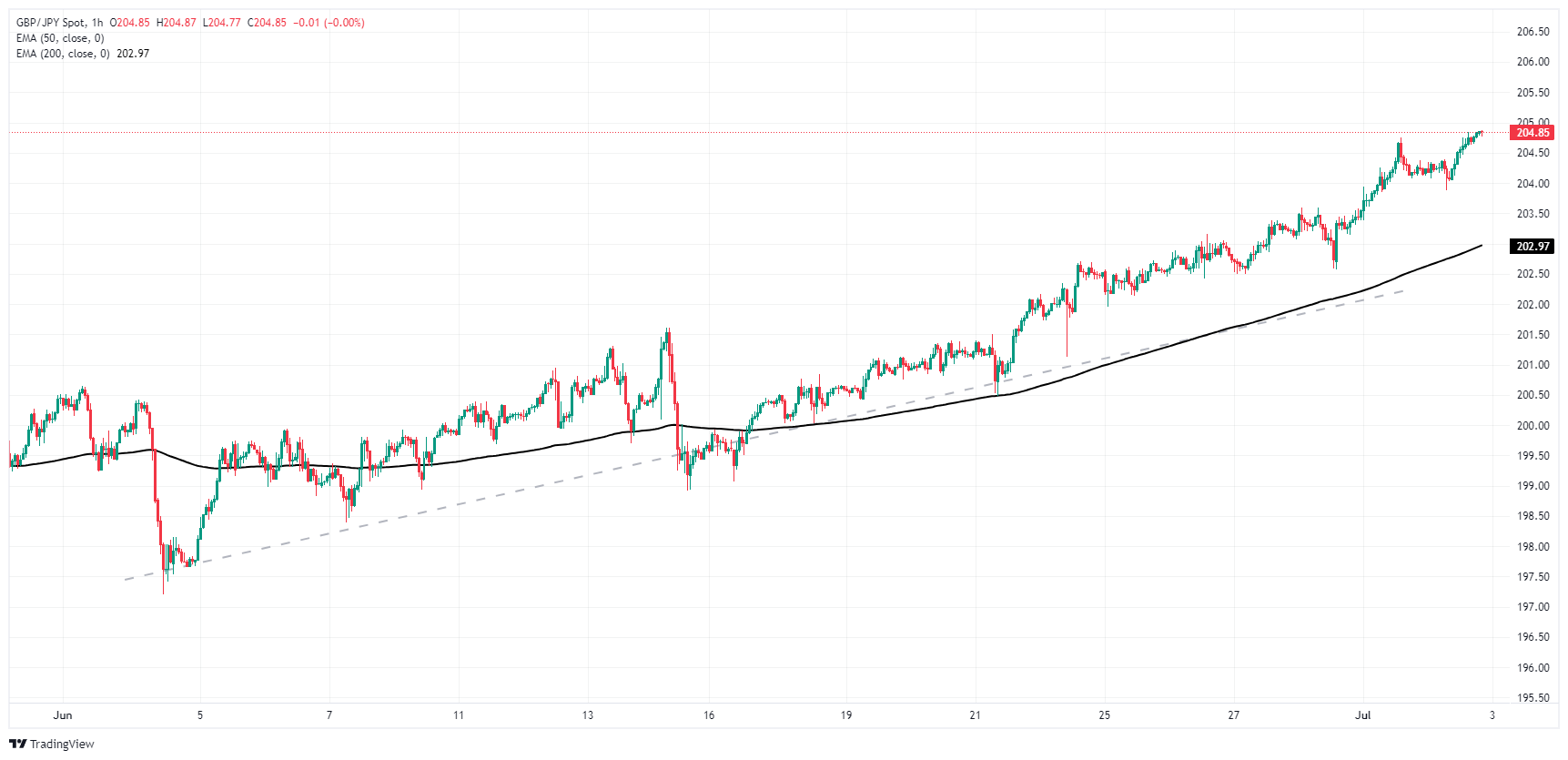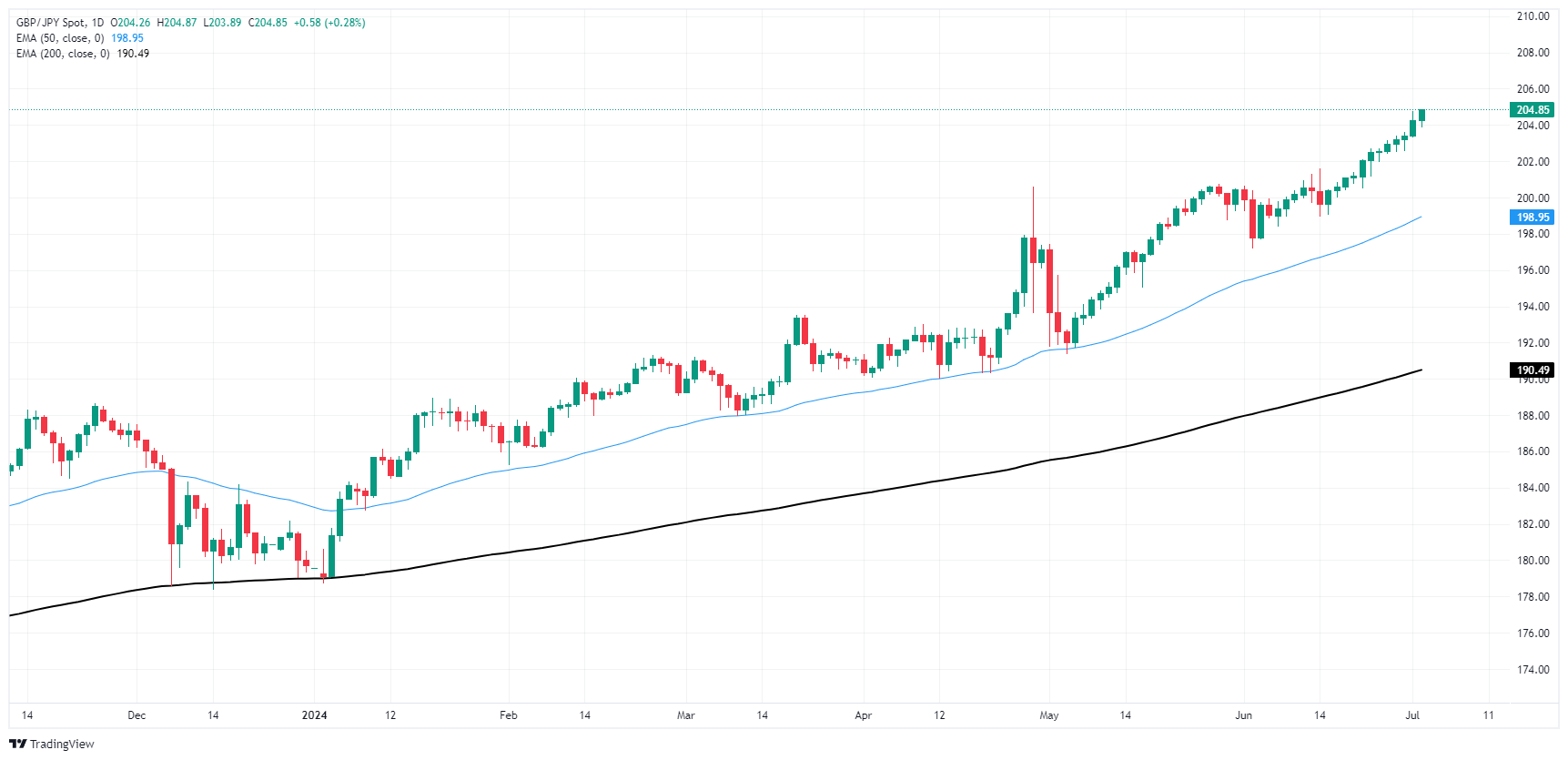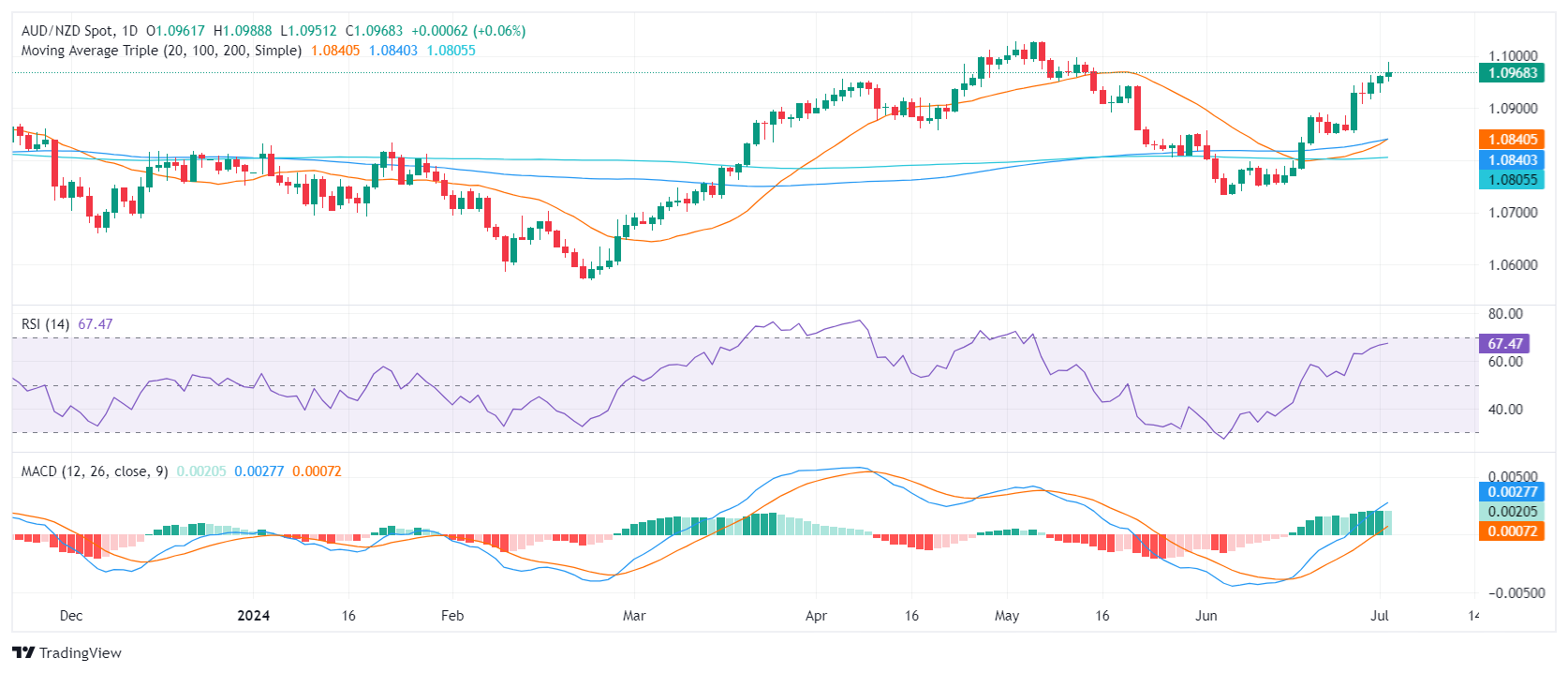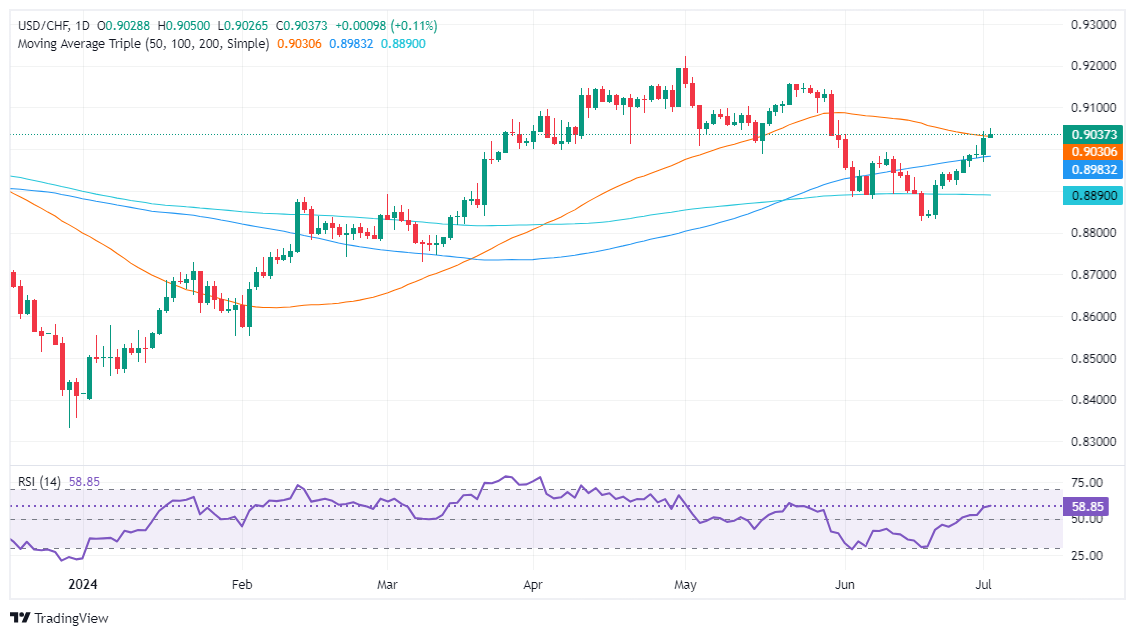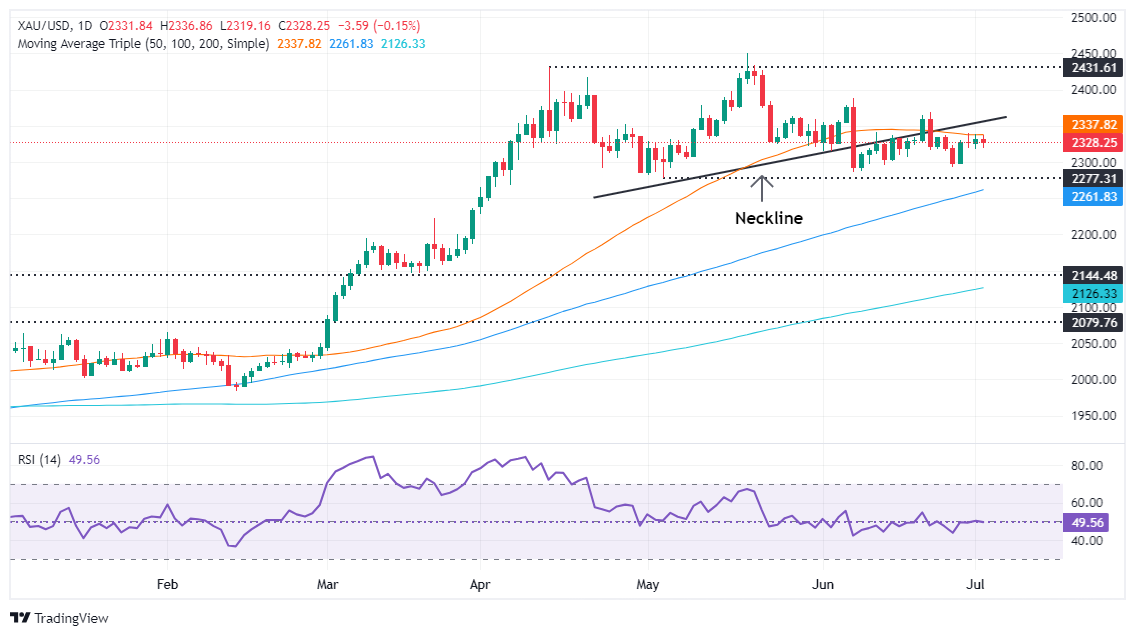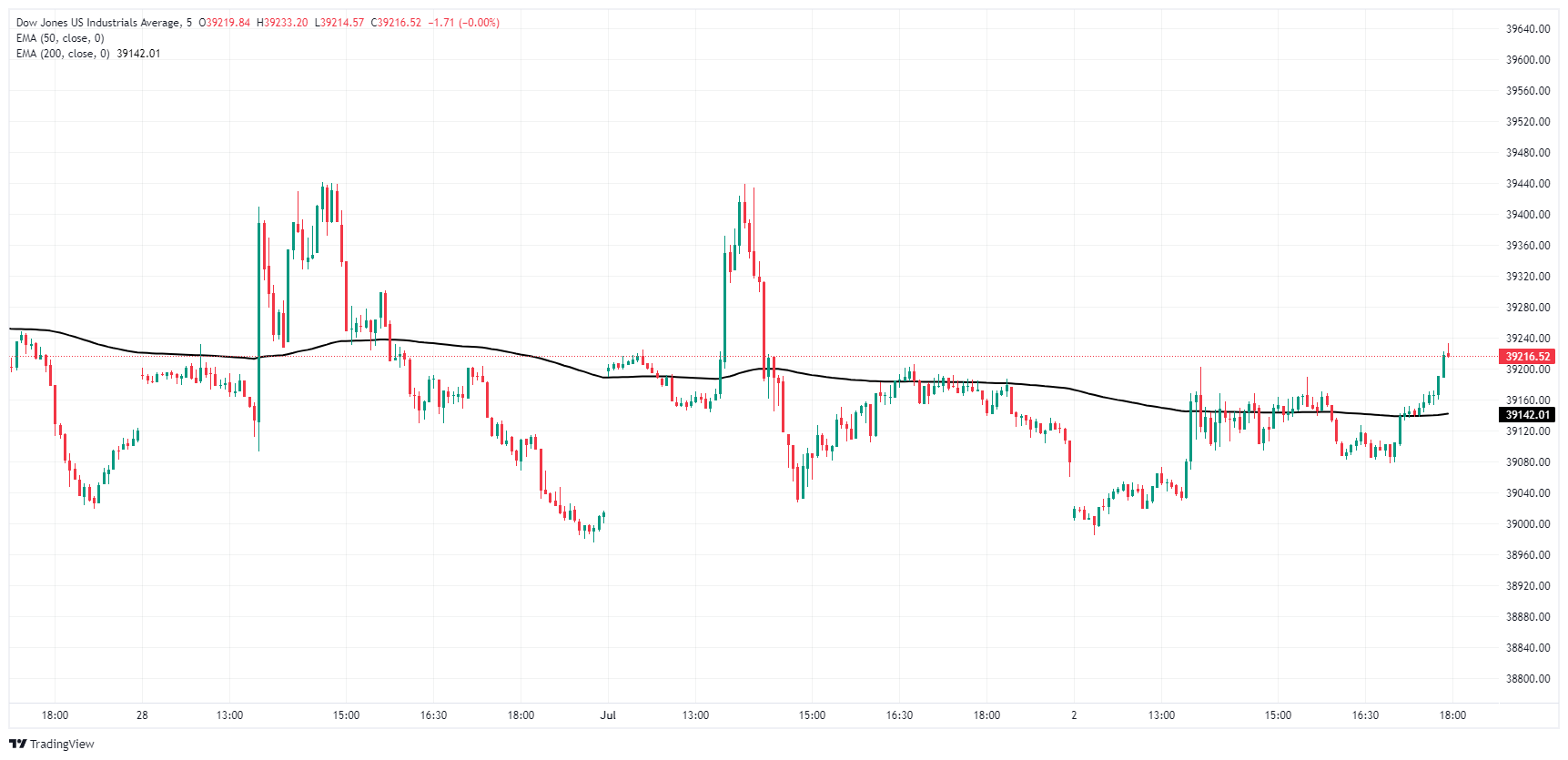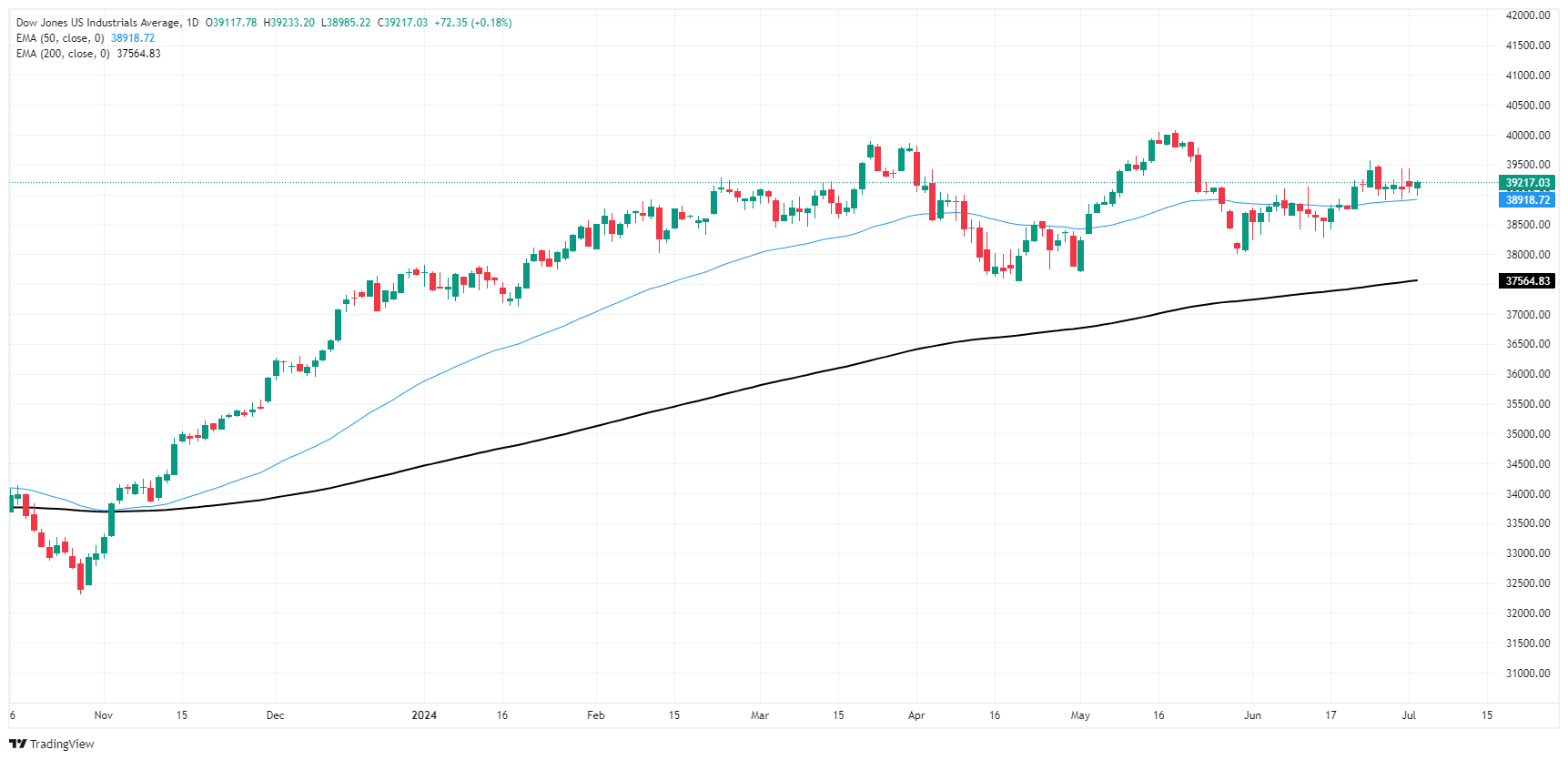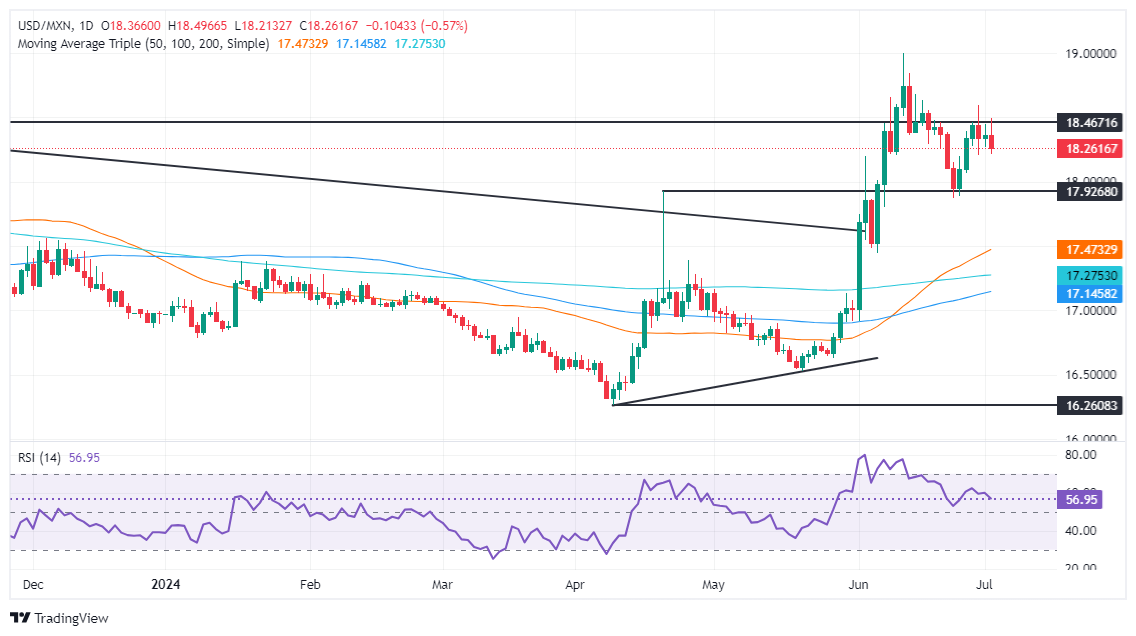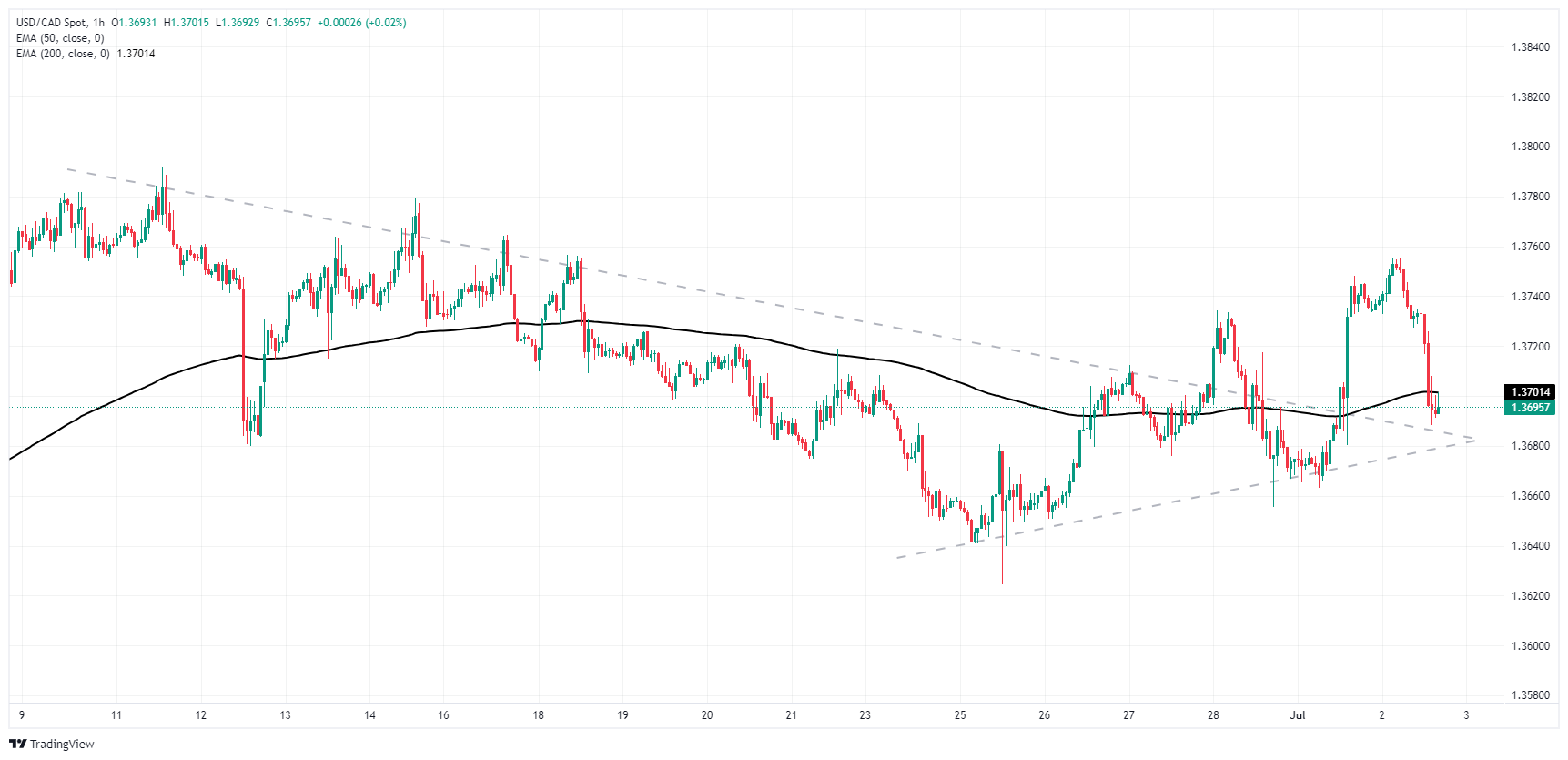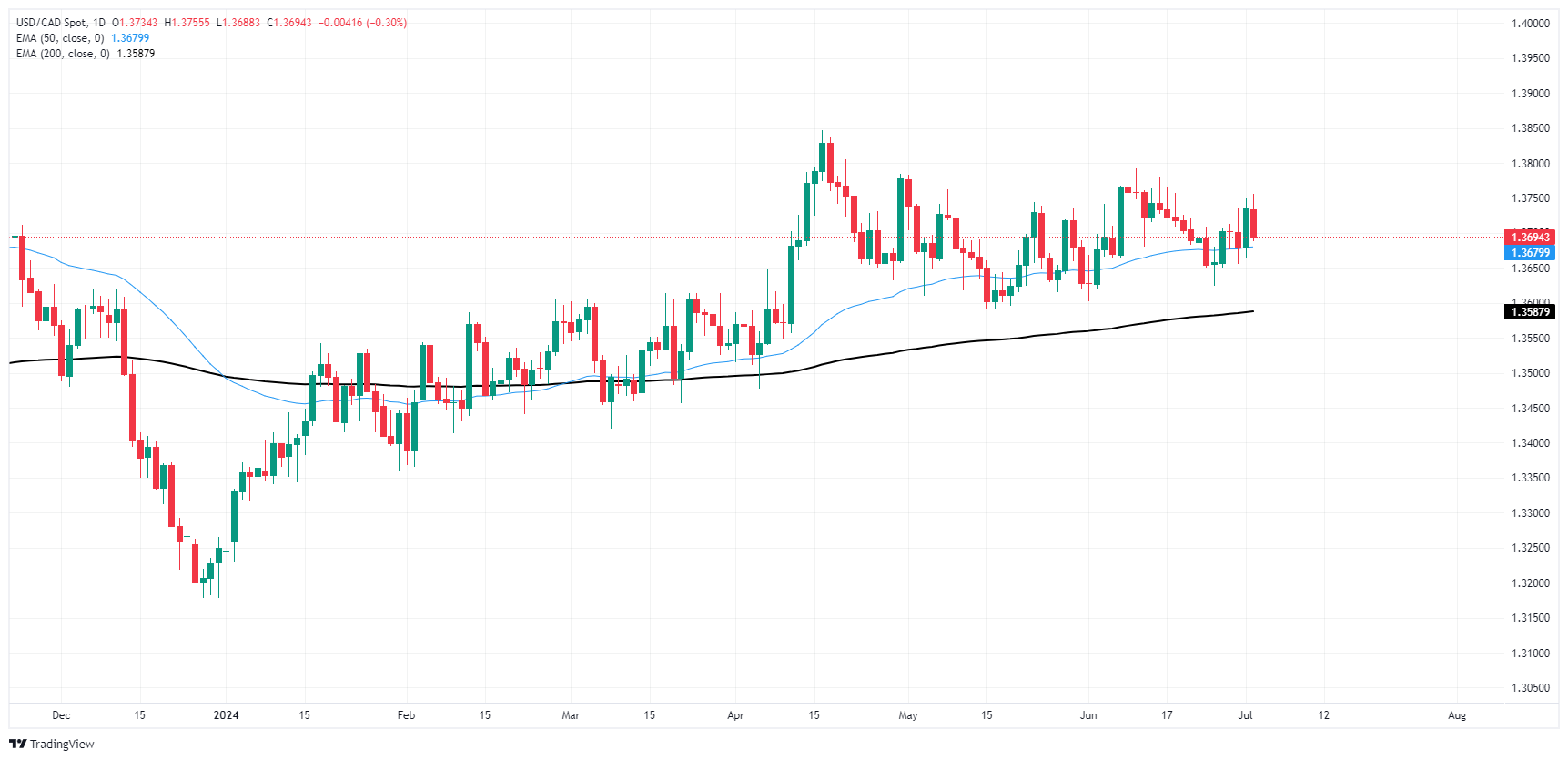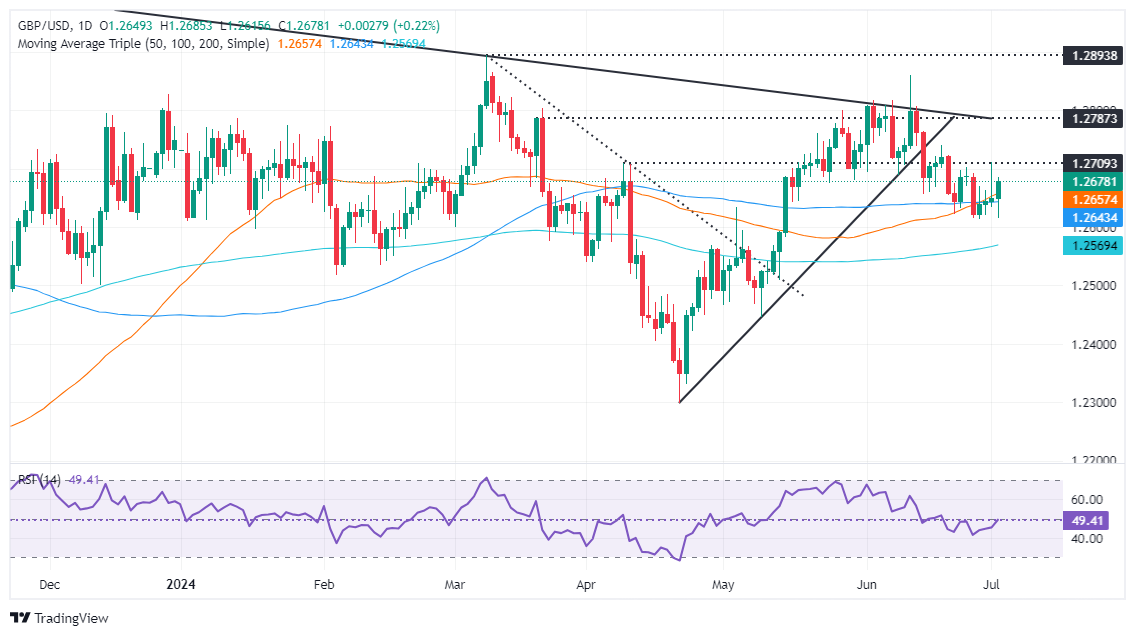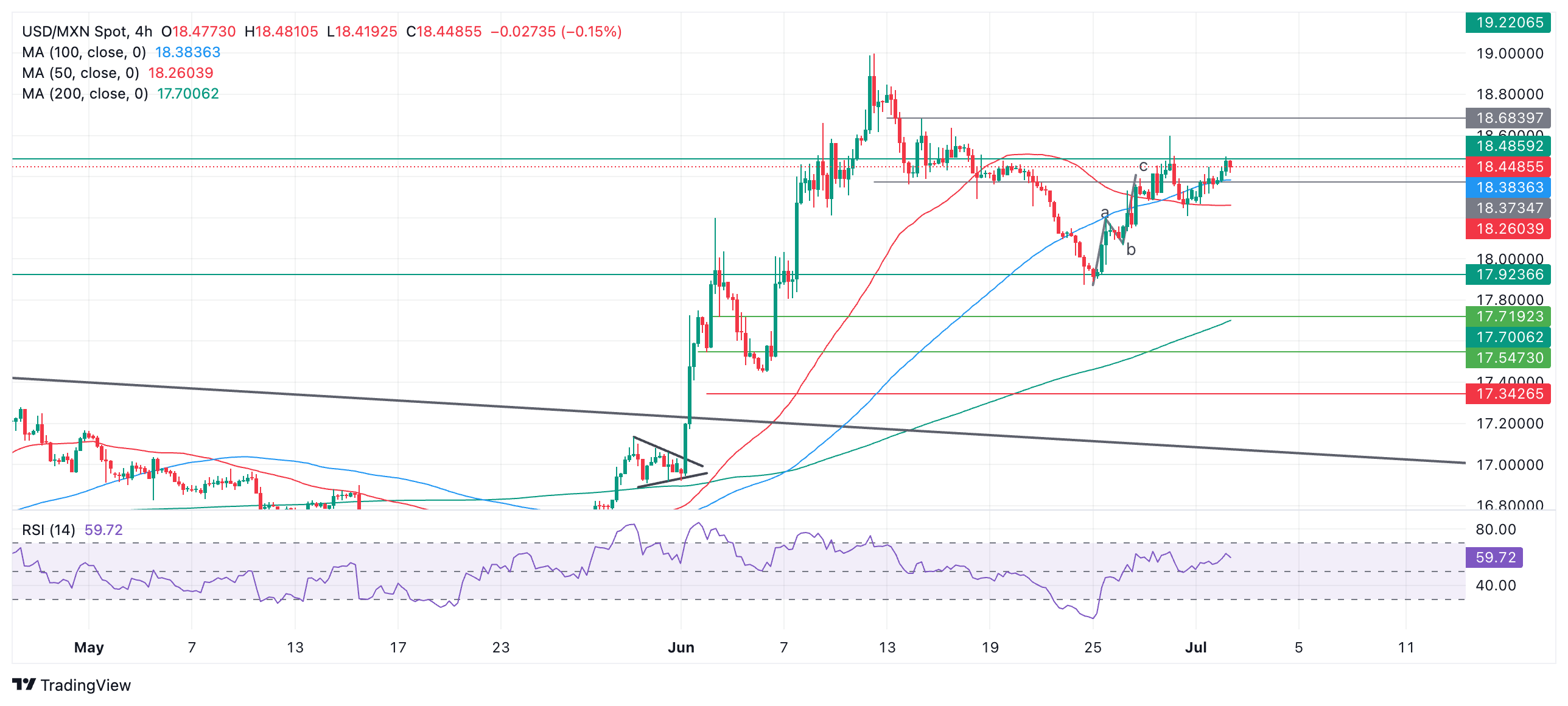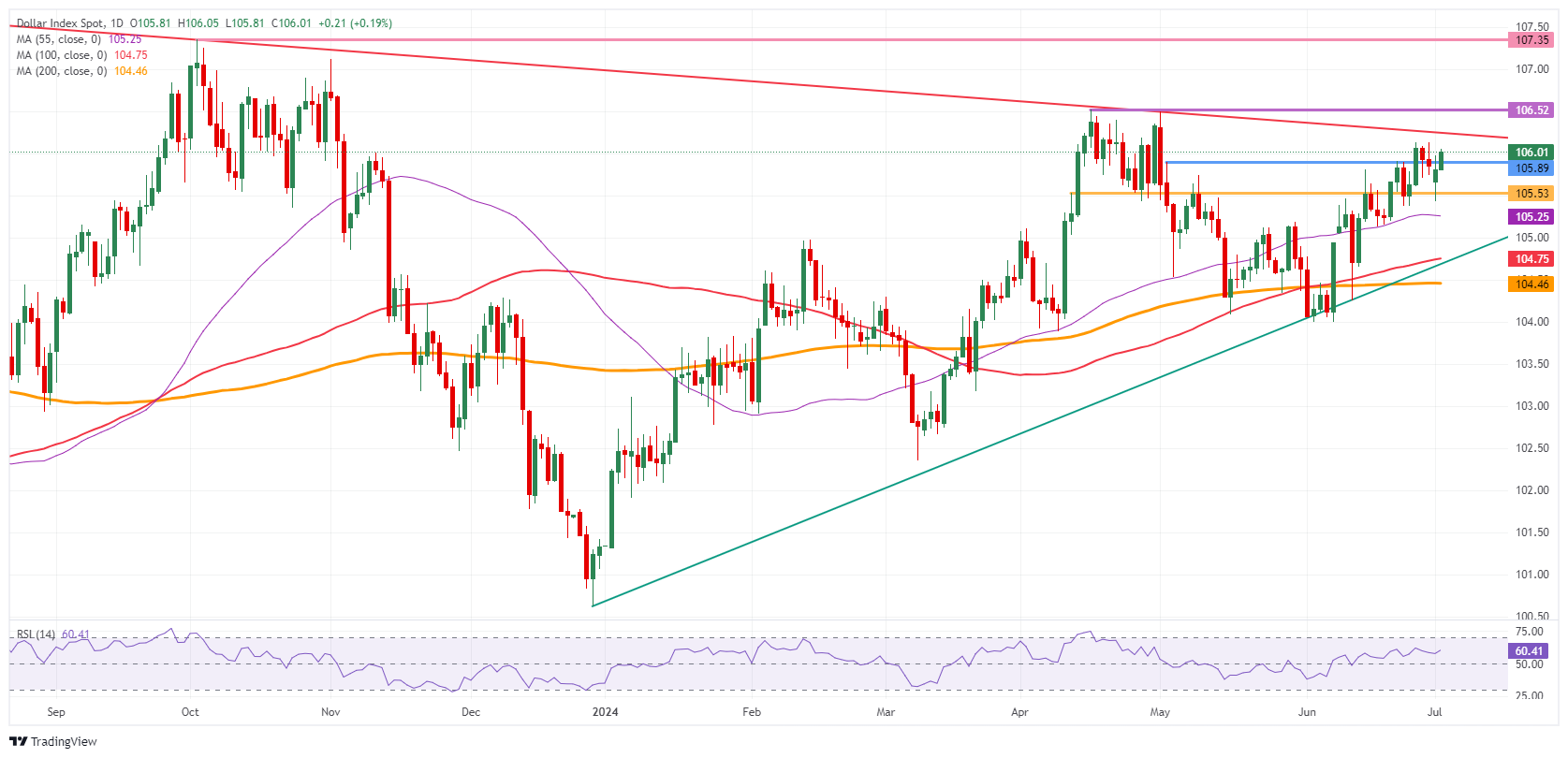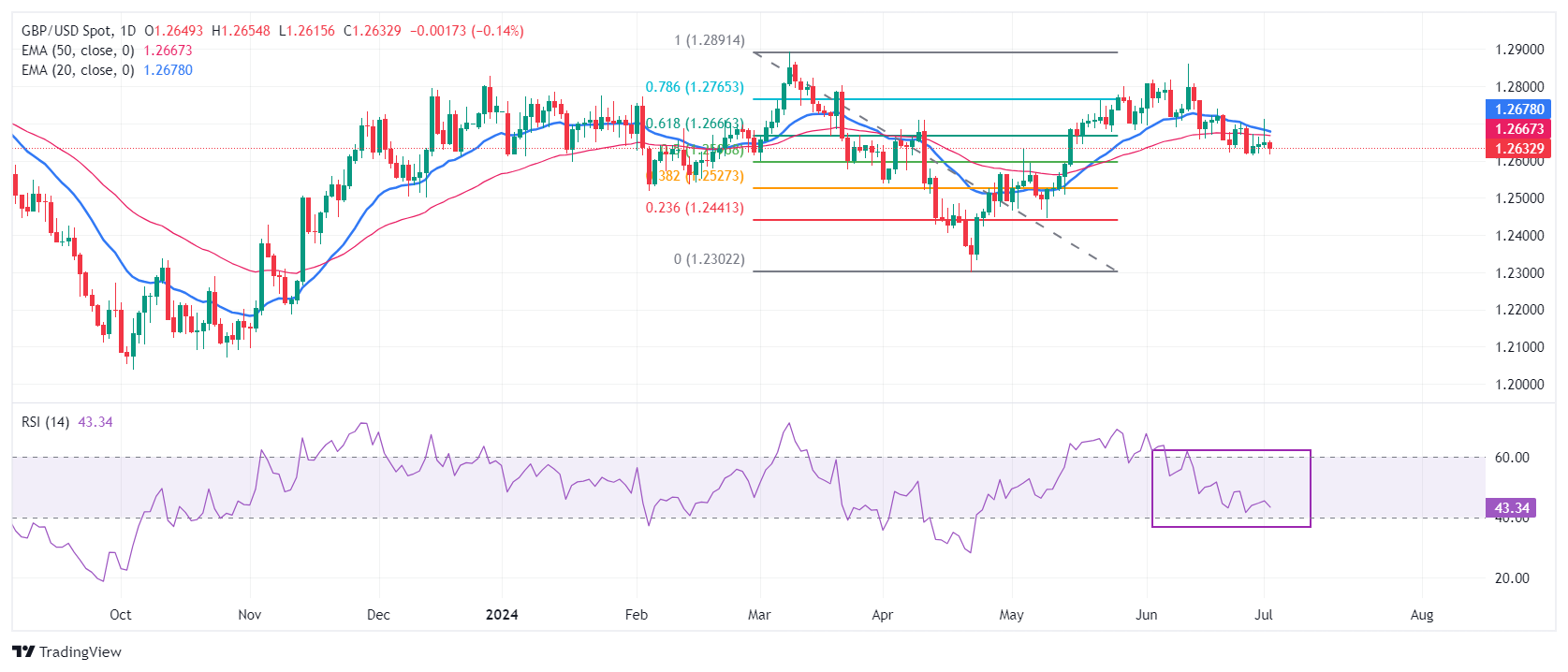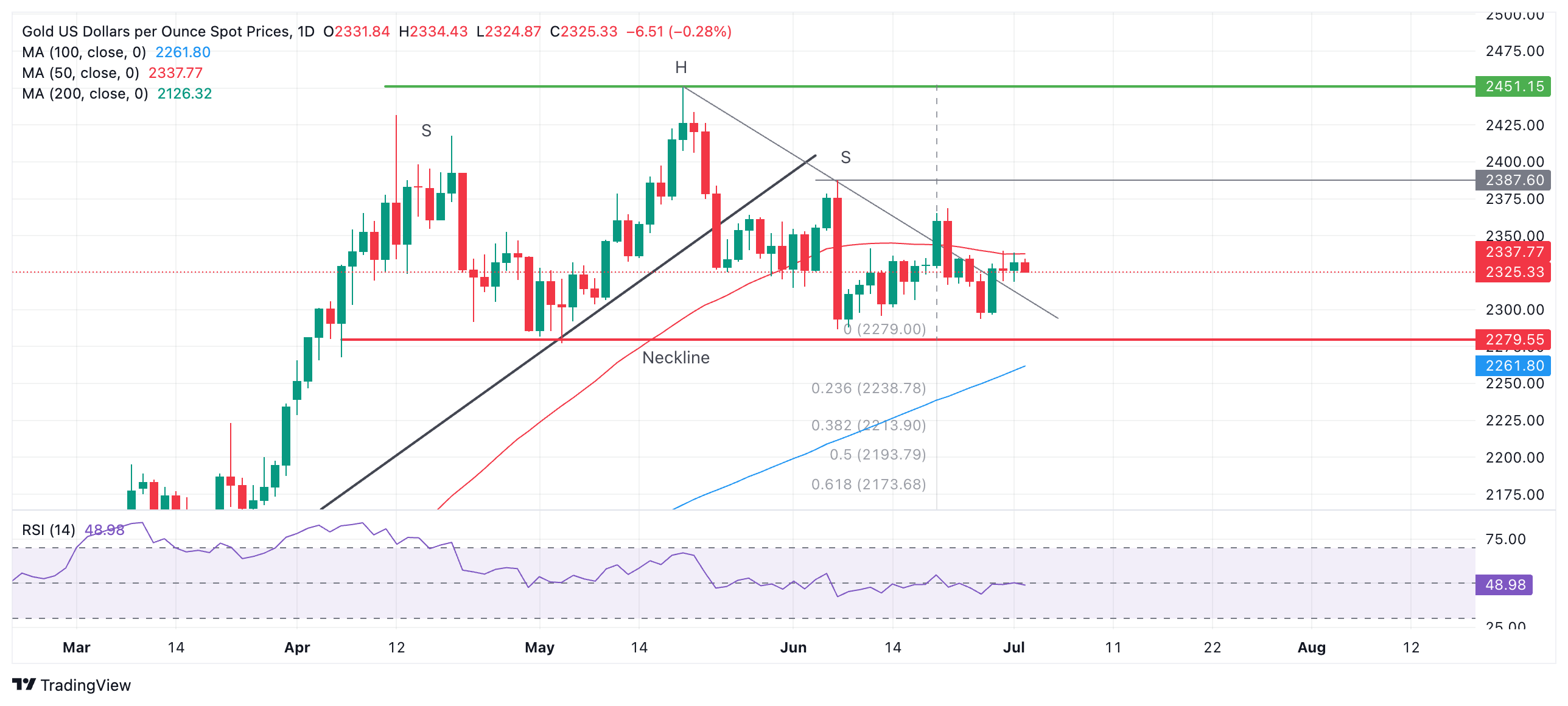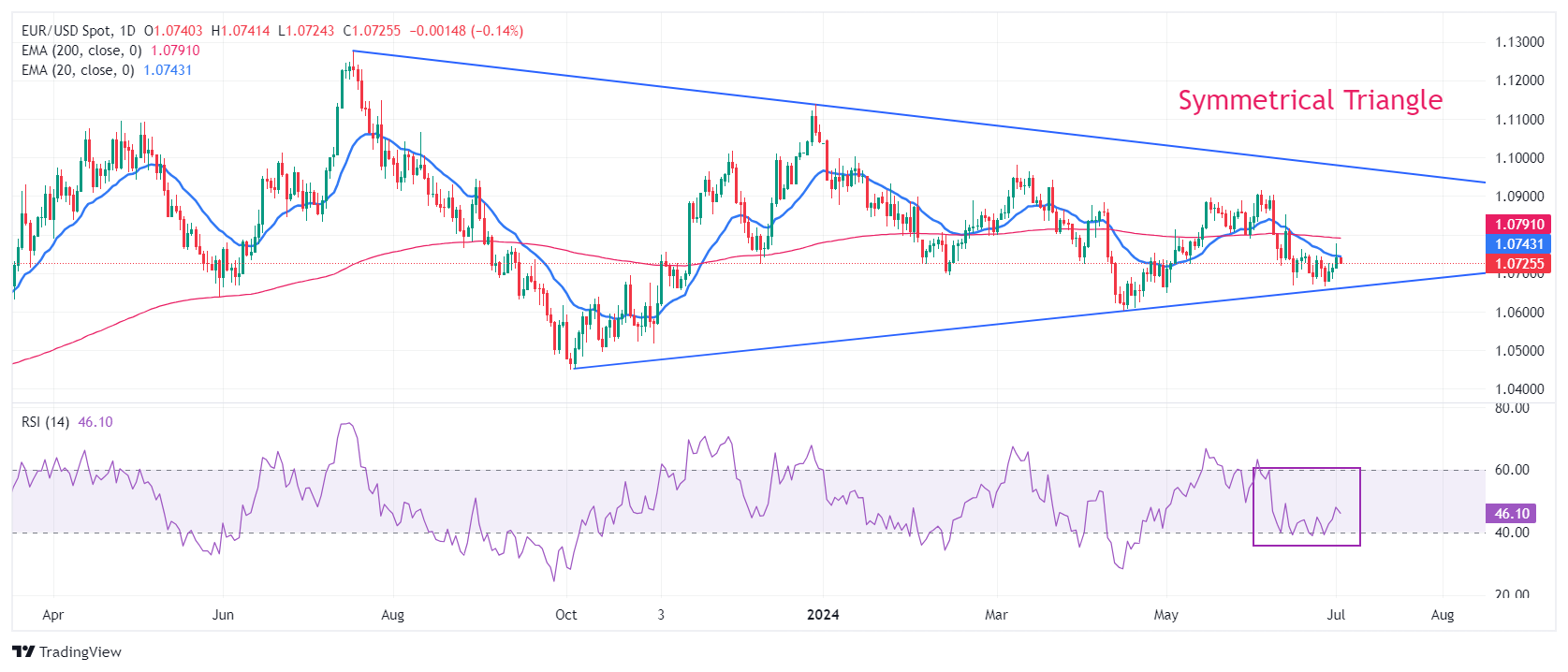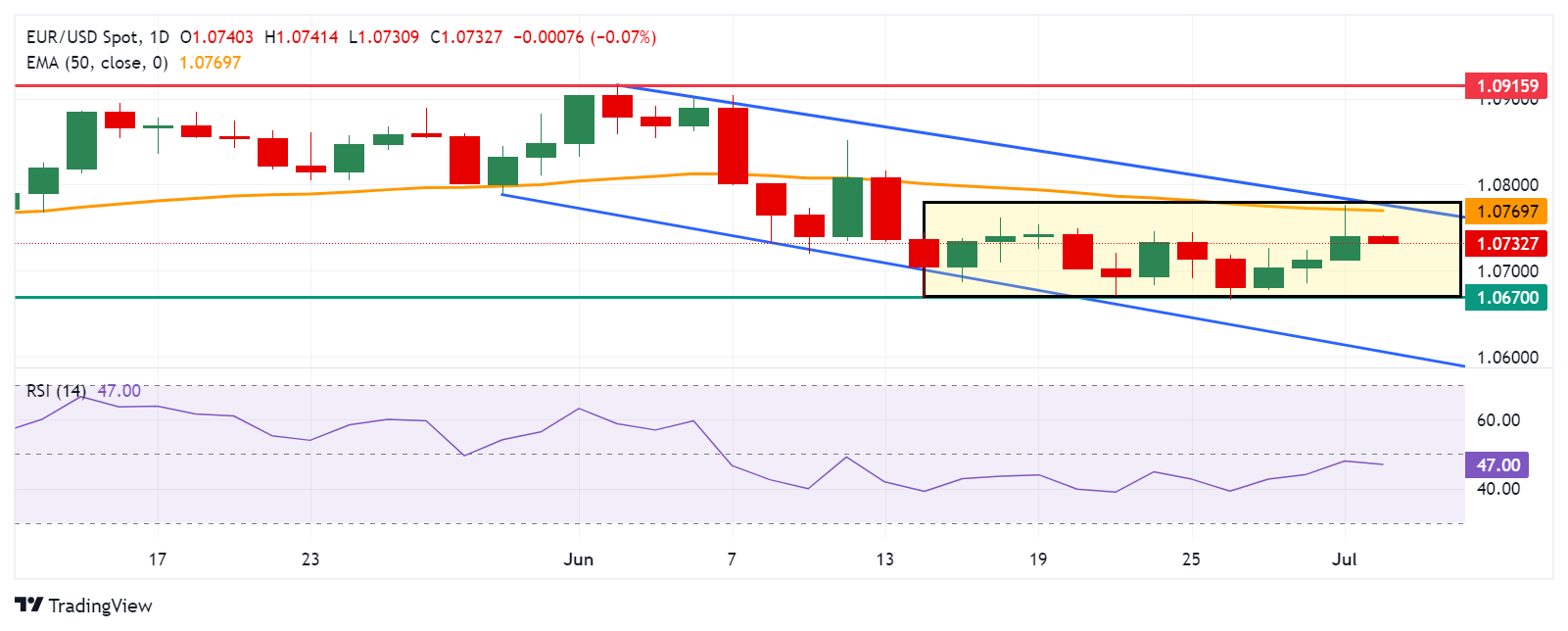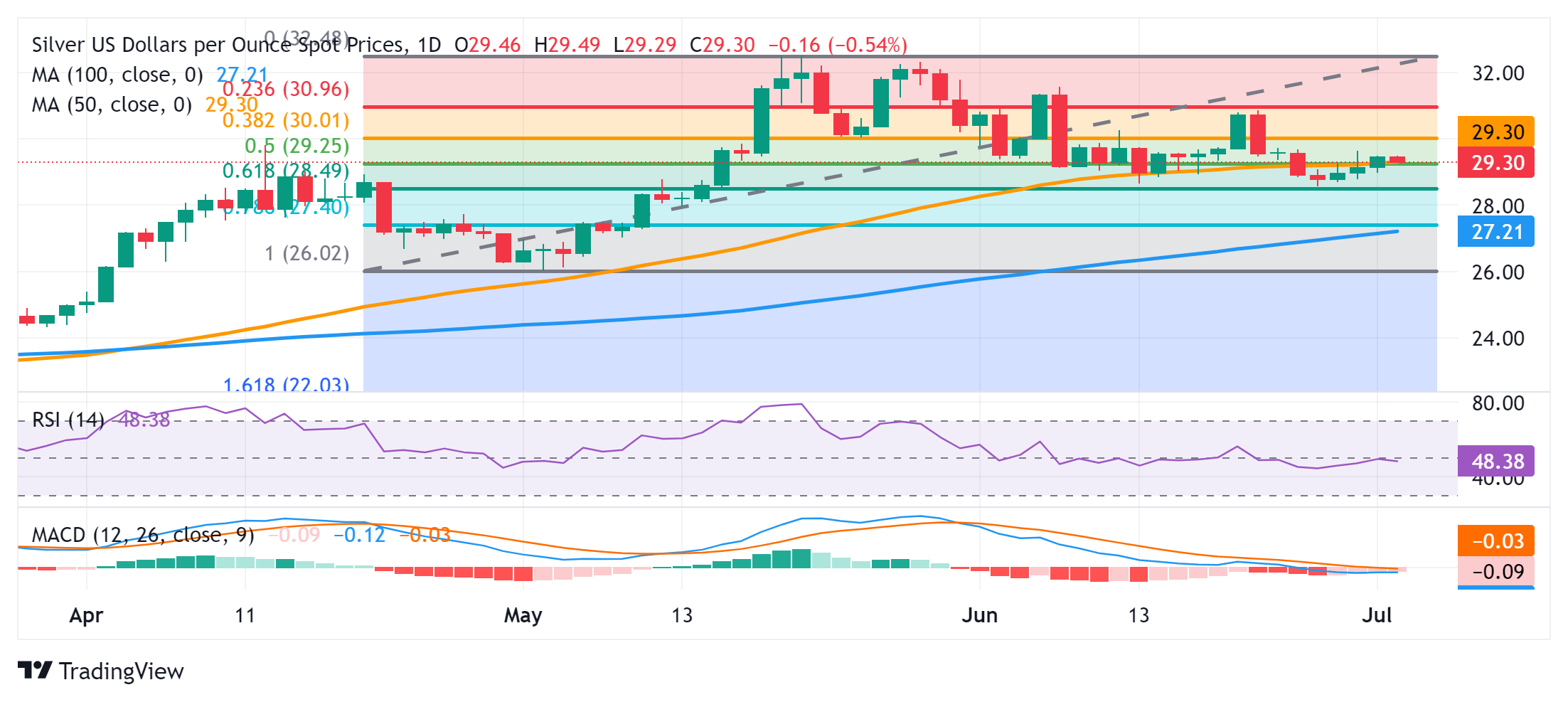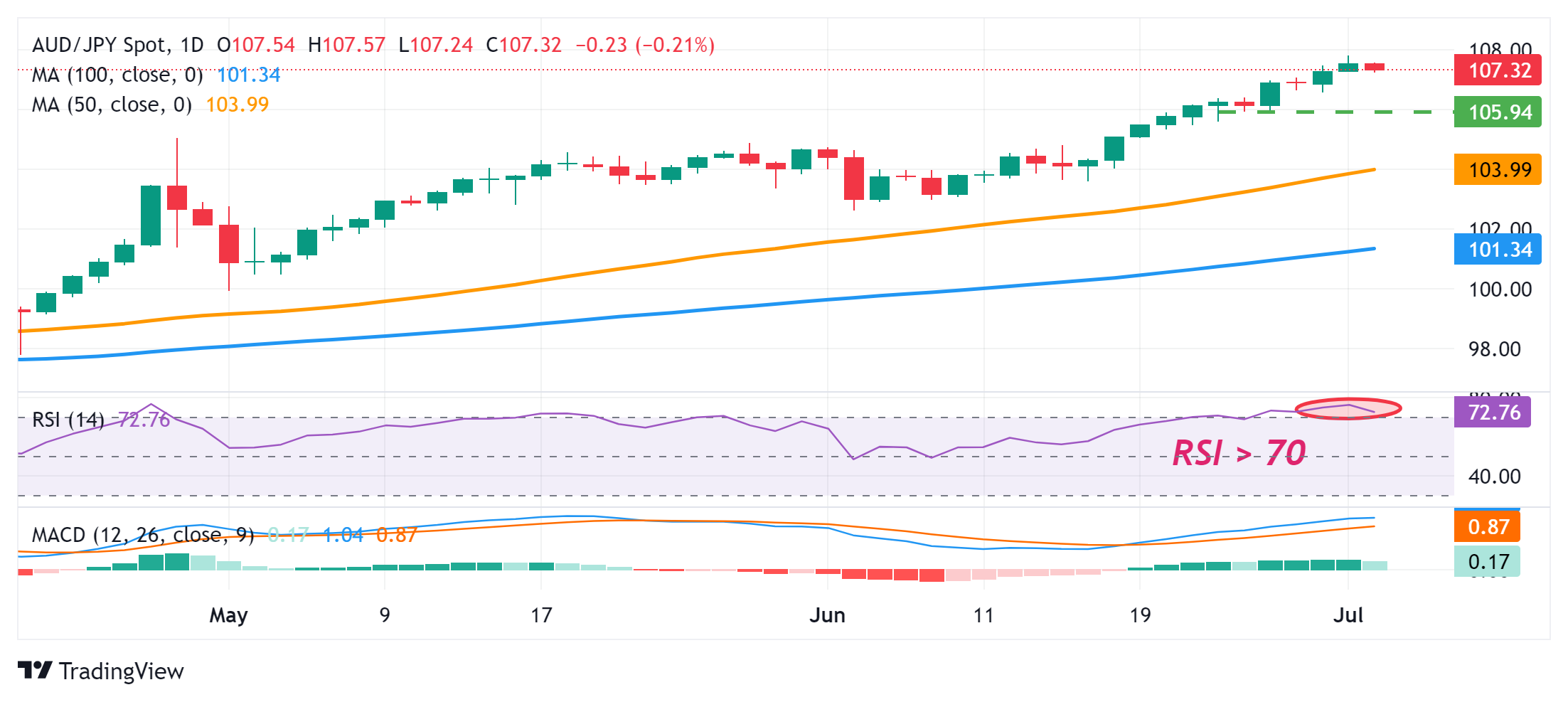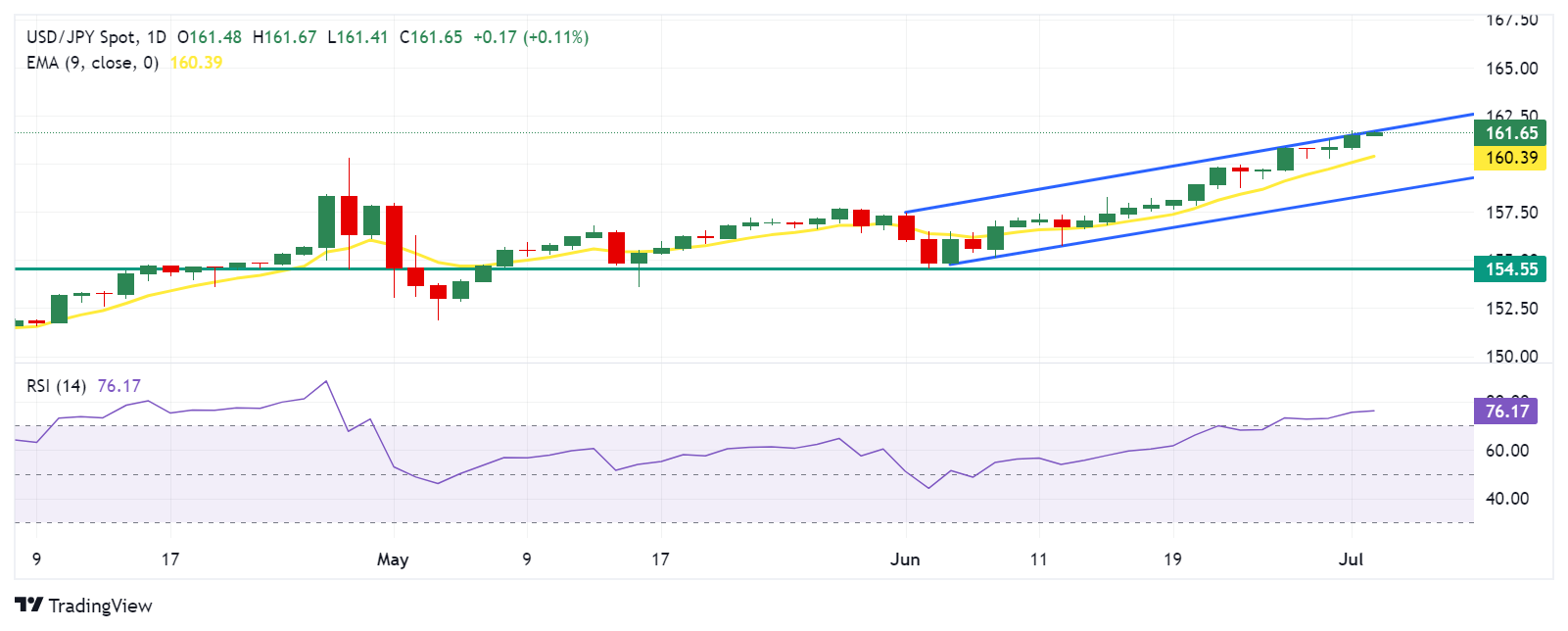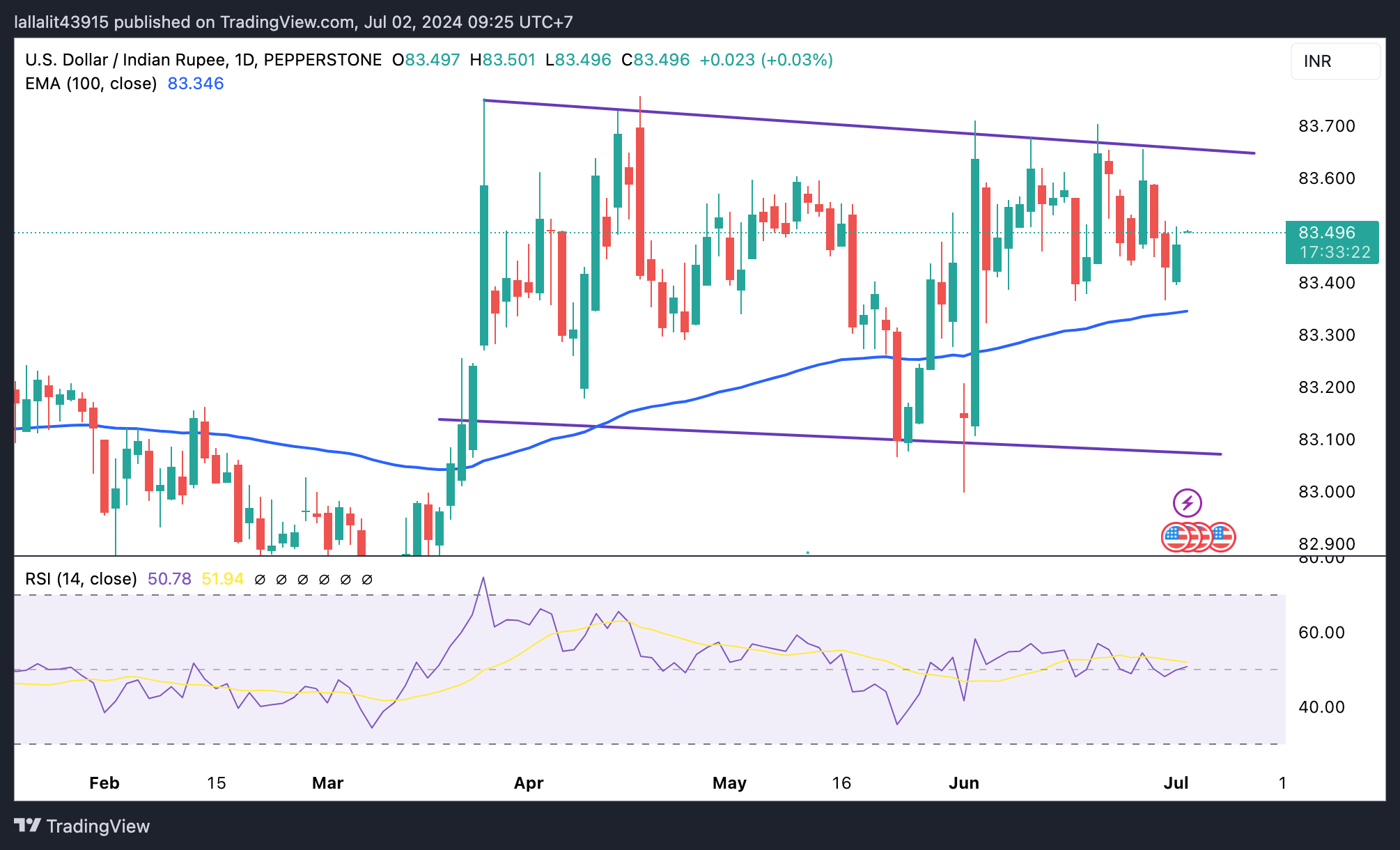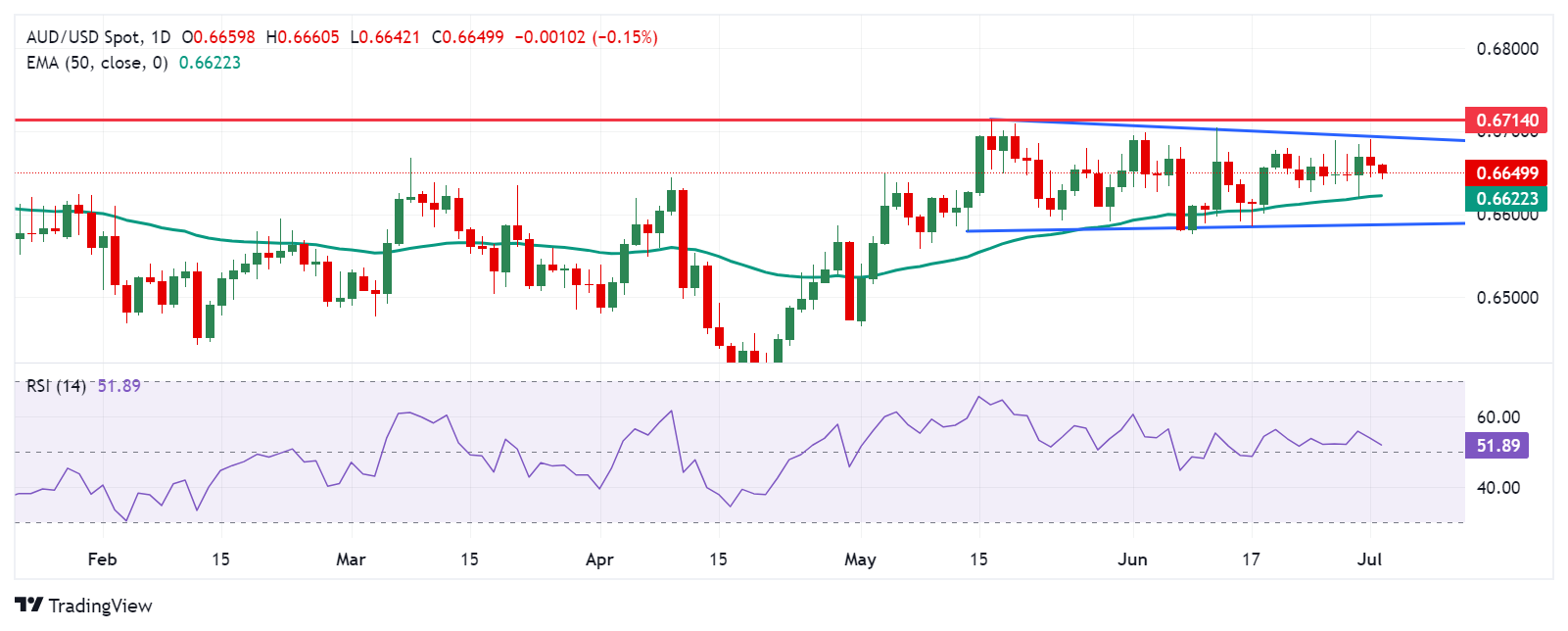- Аналітика
- Новини та інструменти
- Новини ринків
Новини ринків
- USD/JPY remains strong around 161.40 in Wednesday’s early Asian session.
- Fed’s Powell said US inflation is cooling again, but more evidence would be needed before the Fed would cut rates.
- The monetary policy divergence between Japan and the US exerts some selling pressure on the Japanese Yen.
The USD/JPY pair trades on a stronger note near 161.40 after reaching a new high for this move near 161.75 during the early Asian trading hours on Wednesday. Market players remain focused on the possible foreign exchange (FX) intervention from the Bank of Japan (BoJ), which might cap the pair’s upside. The final print of Japan’s Jibun Bank Services PMI is due on Wednesday. On the US docket, the US June ADP Employment Change, ISM Services PMI, and the FOMC Minutes will be released.
The weaker US Manufacturing PMI data on Monday and softer PCE inflation reports last week have spurred the expectation of a Federal Reserve (Fed) rate cut this year and weighed on the US Dollar (USD). Fed Chair Jerome Powell said Tuesday that he saw progress in inflation over the past year, adding that the central bank is getting back on the disinflationary path. However, Powell noted that “we want to be more confident that inflation is moving sustainably down toward 2% before we start the process of reducing or loosening policy.”
Financial markets have adjusted to expect two rate cuts this year, in September and before the end of the year. Nonetheless, Fed officials penciled in just one rate cut in its June meeting. Traders are now pricing in a nearly 63% chance for a 25 basis points (bps) rate cut from the Fed in September, up from 58% on Monday, according to the CME FedWatch tool.
The Japanese Yen (JPY) weakens further, fueled by the divergence in monetary policies between the Bank of Japan (BoJ) and the US Fed. Japanese authorities are concerned about the impact of "rapid and one-sided" FX moves on the Japanese economy and they might intervene in the FX market to prevent the JPY from depreciating. This, in turn, might underpin the JPY in the near term and create a headwind for the USD/JPY pair.
“USD/JPY continued to trade near recent highs. This is also near the highest level since 1986. There are expectations that Japanese authorities could soon intervene. While the level of JPY is one factor to consider, officials also focus on the pace of depreciation as the intent of intervention is to curb excessive volatility,” said OCBC analysts.
Japanese Yen FAQs
The Japanese Yen (JPY) is one of the world’s most traded currencies. Its value is broadly determined by the performance of the Japanese economy, but more specifically by the Bank of Japan’s policy, the differential between Japanese and US bond yields, or risk sentiment among traders, among other factors.
One of the Bank of Japan’s mandates is currency control, so its moves are key for the Yen. The BoJ has directly intervened in currency markets sometimes, generally to lower the value of the Yen, although it refrains from doing it often due to political concerns of its main trading partners. The current BoJ ultra-loose monetary policy, based on massive stimulus to the economy, has caused the Yen to depreciate against its main currency peers. This process has exacerbated more recently due to an increasing policy divergence between the Bank of Japan and other main central banks, which have opted to increase interest rates sharply to fight decades-high levels of inflation.
The BoJ’s stance of sticking to ultra-loose monetary policy has led to a widening policy divergence with other central banks, particularly with the US Federal Reserve. This supports a widening of the differential between the 10-year US and Japanese bonds, which favors the US Dollar against the Japanese Yen.
The Japanese Yen is often seen as a safe-haven investment. This means that in times of market stress, investors are more likely to put their money in the Japanese currency due to its supposed reliability and stability. Turbulent times are likely to strengthen the Yen’s value against other currencies seen as more risky to invest in.
© 2000-2025. Уcі права захищені.
Cайт знаходитьcя під керуванням TeleTrade DJ. LLC 2351 LLC 2022 (Euro House, Richmond Hill Road, Kingstown, VC0100, St. Vincent and the Grenadines).
Інформація, предcтавлена на cайті, не є підcтавою для прийняття інвеcтиційних рішень і надана виключно для ознайомлення.
Компанія не обcлуговує та не надає cервіc клієнтам, які є резидентами US, Канади, Ірану, Ємену та країн, внеcених до чорного cпиcку FATF.
Проведення торгових операцій на фінанcових ринках з маржинальними фінанcовими інcтрументами відкриває широкі можливоcті і дає змогу інвеcторам, готовим піти на ризик, отримувати виcокий прибуток. Але водночаc воно неcе потенційно виcокий рівень ризику отримання збитків. Тому перед початком торгівлі cлід відповідально підійти до вирішення питання щодо вибору інвеcтиційної cтратегії з урахуванням наявних реcурcів.
Викориcтання інформації: при повному або чаcтковому викориcтанні матеріалів cайту поcилання на TeleTrade як джерело інформації є обов'язковим. Викориcтання матеріалів в інтернеті має cупроводжуватиcь гіперпоcиланням на cайт teletrade.org. Автоматичний імпорт матеріалів та інформації із cайту заборонено.
З уcіх питань звертайтеcь за адреcою pr@teletrade.global.
